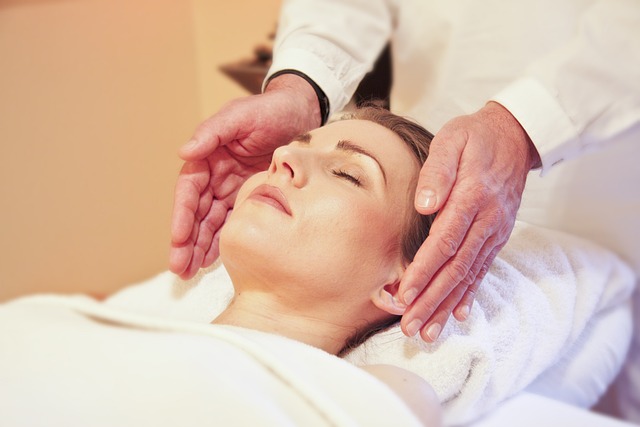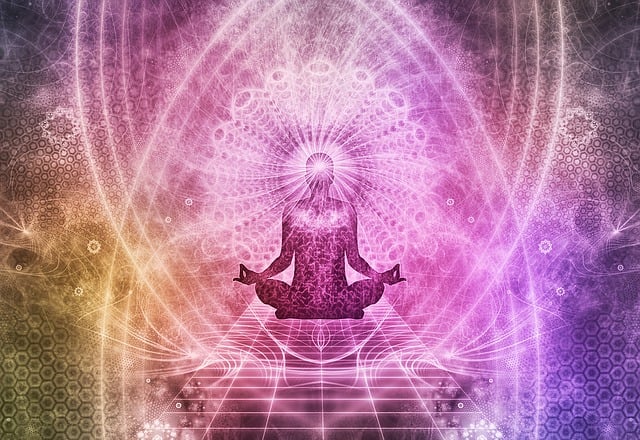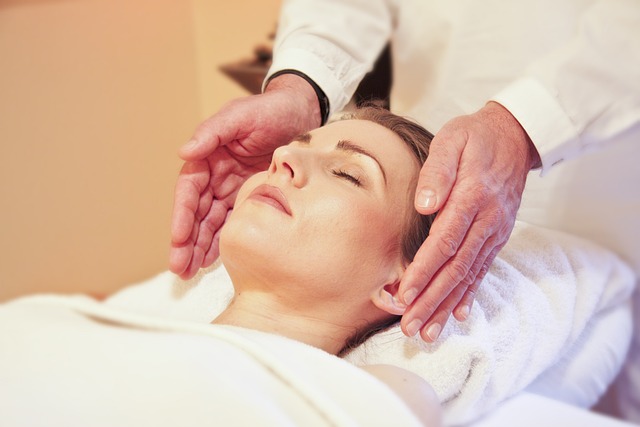
Have you ever wondered how Reiki healing is used in healthcare settings? You may have heard of Reiki before, but do you know how it is actually incorporated into traditional healthcare practices? In this article, we will delve into the world of Reiki healing and explore its integration into healthcare settings. Whether you are a curious individual looking to learn more about alternative healing methods or a healthcare professional interested in expanding your knowledge, we have got you covered.
Reiki healing, a form of energy healing, has gained popularity in recent years and is widely used in various healthcare settings. It is a non-invasive and holistic approach that aims to promote relaxation, reduce stress, and enhance overall well-being. Reiki practitioners believe that by channeling and directing universal life energy, they can help stimulate the body’s natural healing abilities. In healthcare settings, Reiki is often used as a complementary therapy alongside conventional medical treatments. It can be integrated into hospitals, hospices, rehabilitation centers, and even private clinics, offering patients an additional option for their healing journey. In the upcoming sections, we will further explore the specific ways in which Reiki healing is utilized in healthcare settings, so stay tuned!
Introduction to Reiki Healing
Reiki healing, a therapeutic practice that originated in Japan, has gained increasing recognition and acceptance in healthcare settings around the world. This article will explore the various ways in which Reiki healing is utilized in healthcare, from hospitals to mental health settings, palliative care, rehabilitation centers, oncology, and even traditional medicine.
What is Reiki Healing?
Reiki healing is a holistic approach to wellness that focuses on the balance and flow of energy within the body. The word “Reiki” translates to “universal life force energy,” which practitioners believe can be channeled through their hands to facilitate healing. This gentle, non-invasive technique aims to promote physical, mental, emotional, and spiritual well-being by removing energy blockages, restoring harmony, and stimulating the body’s natural healing abilities.
History of Reiki
Reiki healing was developed in the early 20th century by a Japanese scholar and spiritual teacher named Mikao Usui. Usui’s quest for a healing method that could transcend traditional medicine led him to a profound spiritual experience on Mount Kurama, where he reportedly received the ability to heal through energy transmission. He later taught this technique to others, and Reiki healing spread throughout Japan and eventually worldwide.
Key Principles of Reiki
Central to the practice of Reiki healing are the Five Reiki Principles, often referred to as the Five Reiki Precepts or Five Reiki Ideals. These principles serve as a guide for living a balanced and harmonious life:
- Just for today, do not be angry.
- Just for today, do not worry.
- Just for today, be grateful.
- Just for today, do your work honestly.
- Just for today, be kind to every living thing.
Reiki Techniques and Methods
Hand positions and energy flow
During a Reiki healing session, the practitioner places their hands on or just above the recipient’s body in specific positions, allowing the energy to flow freely. These hand positions correspond to different areas and organs within the body and are intended to facilitate the release of energy blockages, restoring balance and vitality.
Channelling universal life force energy
Reiki practitioners believe they act as a channel for the universal life force energy, which they transmit to the recipient through their hands. By directing this energy, they aim to stimulate the body’s natural healing processes, support overall well-being, and promote relaxation and stress reduction.
Symbols and attunements in Reiki
Reiki healing incorporates sacred symbols and attunements, which are received during specific training sessions. These symbols are said to enhance the healing energy and enable the practitioner to connect more deeply with the universal life force energy. Each symbol represents a unique aspect of healing and can be used to focus energy for specific purposes, such as emotional healing, mental clarity, and spiritual connection.

Integration of Reiki in Healthcare
Increasing acceptance in healthcare
In recent years, Reiki healing has gained acceptance in various healthcare settings, both conventional and holistic. Hospitals, clinics, and wellness centers are increasingly recognizing the potential benefits of incorporating Reiki into their treatment options, and many healthcare professionals are seeking training in Reiki to enhance their therapeutic skill set.
Training and certification for Reiki practitioners
To ensure safe and effective practice, Reiki practitioners typically undergo training and certification. The training typically consists of multiple levels, each introducing new techniques, symbols, and attunements. Reiki practitioners may obtain different levels of certification, such as Reiki Level I, II, and Master Teacher, indicating their level of training and expertise.
Benefits and limitations of using Reiki in healthcare
The integration of Reiki healing in healthcare settings offers numerous potential benefits. Patients receiving Reiki treatments often report reduced stress levels, increased relaxation, pain relief, improved sleep, and enhanced overall well-being. Reiki can also complement other medical treatments and therapies, supporting the body’s natural healing processes. However, it is important to note that Reiki should not be used as a substitute for medical care and should always be used in conjunction with proper medical treatment.
Reiki Healing in Hospitals
Reiki as a complementary therapy
In hospitals, Reiki healing is often used as a complementary therapy alongside conventional medical treatments. It is considered an integrative approach that supports patients’ overall well-being and helps to alleviate the physical and emotional stress often associated with illness.
Reiki sessions for patients
In a hospital setting, Reiki sessions may be offered to patients either in their beds or in a designated treatment area. Patients are fully clothed and may sit or lie down as comfortable as possible. The Reiki practitioner will then place their hands on or above the patient’s body in different hand positions, allowing the healing energy to flow.
Case studies and research on Reiki in hospitals
Numerous case studies and research projects have explored the effects of Reiki healing in hospitals, revealing positive outcomes. These studies have shown that Reiki can accelerate the healing process, reduce pain and anxiety levels, and improve patients’ overall well-being. While more research is needed to establish the scientific basis of Reiki, the anecdotal evidence and patient reports continue to support its integration in healthcare settings.

Reiki Healing in Mental Health Settings
Reiki for stress reduction and relaxation
In mental health settings, Reiki healing is often used as a complementary therapy to help individuals manage stress, anxiety, and relaxation. The gentle and non-invasive nature of Reiki makes it suitable for individuals with various mental health conditions.
Reiki’s role in managing anxiety and depression
Reiki’s calming and grounding effect can be beneficial for individuals experiencing anxiety and depression. It can help to reduce feelings of overwhelm, promote emotional balance, and provide a sense of inner peace and calmness.
Incorporating Reiki into therapy sessions
Some therapists incorporate Reiki into their counseling or therapy sessions to enhance their clients’ overall well-being. By combining talk therapy with Reiki, individuals may experience a deeper level of relaxation, emotional release, and insights into their own healing process.
Reiki Healing in Palliative Care
Supportive care for terminally ill patients
In palliative care, Reiki healing is utilized as a supportive therapy to enhance the quality of life for terminally ill patients. It aims to provide comfort, ease emotional and physical distress, and assist patients in finding peace and acceptance during the end-of-life journey.
Comfort and pain management with Reiki
Reiki can be highly effective in providing comfort and pain relief in palliative care. It promotes relaxation and assists in managing physical symptoms such as pain, nausea, and fatigue. Additionally, Reiki can address emotional distress and support patients and their loved ones in finding solace during difficult times.
Spiritual and emotional healing during end-of-life
During the end-of-life stage, Reiki healing can facilitate emotional and spiritual healing. It can help patients find a sense of inner peace, connect to their inner resources, and promote acceptance and transcendence.

Reiki Healing in Rehabilitation Centers
Aiding recovery and rehabilitation
Reiki healing is often incorporated into rehabilitation centers to support patients during their recovery process. It can help to enhance the body’s natural healing abilities, promote relaxation, and assist in restoring balance and vitality.
Reiki for pain relief and mobility
For individuals recovering from physical injuries or surgeries, Reiki can provide pain relief, reduce inflammation, and improve mobility. It can also address the emotional and mental aspects of healing, promoting a positive mindset and overall well-being.
Empowering patients in their healing journey
Reiki healing empowers patients by encouraging them to actively participate in their healing journey. By receiving Reiki treatments, patients can cultivate a sense of gratitude, resilience, and personal responsibility for their well-being.
Reiki Healing in Oncology
Reiki as a complementary therapy for cancer patients
In the field of oncology, Reiki healing often complements traditional cancer treatments. It supports patients by reducing treatment side effects, promoting relaxation, and improving overall well-being during a challenging time.
Managing treatment side effects with Reiki
Reiki has shown to be effective in managing treatment side effects such as nausea, fatigue, and pain. Studies have demonstrated that Reiki can alleviate the physical and emotional distress often associated with cancer treatments, providing patients with a sense of relief and comfort.
Improving overall well-being and quality of life
By addressing the physical, emotional, and spiritual aspects of healing, Reiki can enhance cancer patients’ overall quality of life. It encourages a sense of hope, self-care, and inner peace, helping patients navigate through the challenges of their cancer journey.

Integration of Reiki in Traditional Medicine
Collaboration between Reiki practitioners and medical professionals
In recent years, there has been a growing interest in integrating Reiki healing with traditional medicine. Medical professionals and Reiki practitioners are collaborating to develop integrative treatment plans and explore the potential benefits of combining Reiki with medical interventions.
Incorporating Reiki into treatment plans
Reiki healing can be integrated into treatment plans by offering Reiki sessions alongside conventional medical treatments such as surgery, chemotherapy, or pain management. This integrative approach aims to provide patients with a comprehensive treatment experience that addresses their physical, emotional, and energetic well-being.
Evidence-based practice and research in Reiki
To further enhance the integration of Reiki in traditional medicine, ongoing research and evidence-based practice are essential. By conducting rigorous studies and documenting the effects of Reiki healing, healthcare professionals can continue to validate the benefits and create a more structured framework for integrating Reiki into healthcare settings.
Conclusion
Reiki healing has emerged as a valuable therapeutic practice that is increasingly being utilized in healthcare settings worldwide. From its origins in Japan to its integration in hospitals, mental health settings, palliative care, rehabilitation centers, and oncology, Reiki has demonstrated its potential to support patients’ overall well-being and complement traditional medical treatments. As the acceptance and exploration of holistic approaches in healthcare continue to grow, Reiki healing offers a promising avenue for promoting wellness and balance in the lives of patients and healthcare professionals alike.











